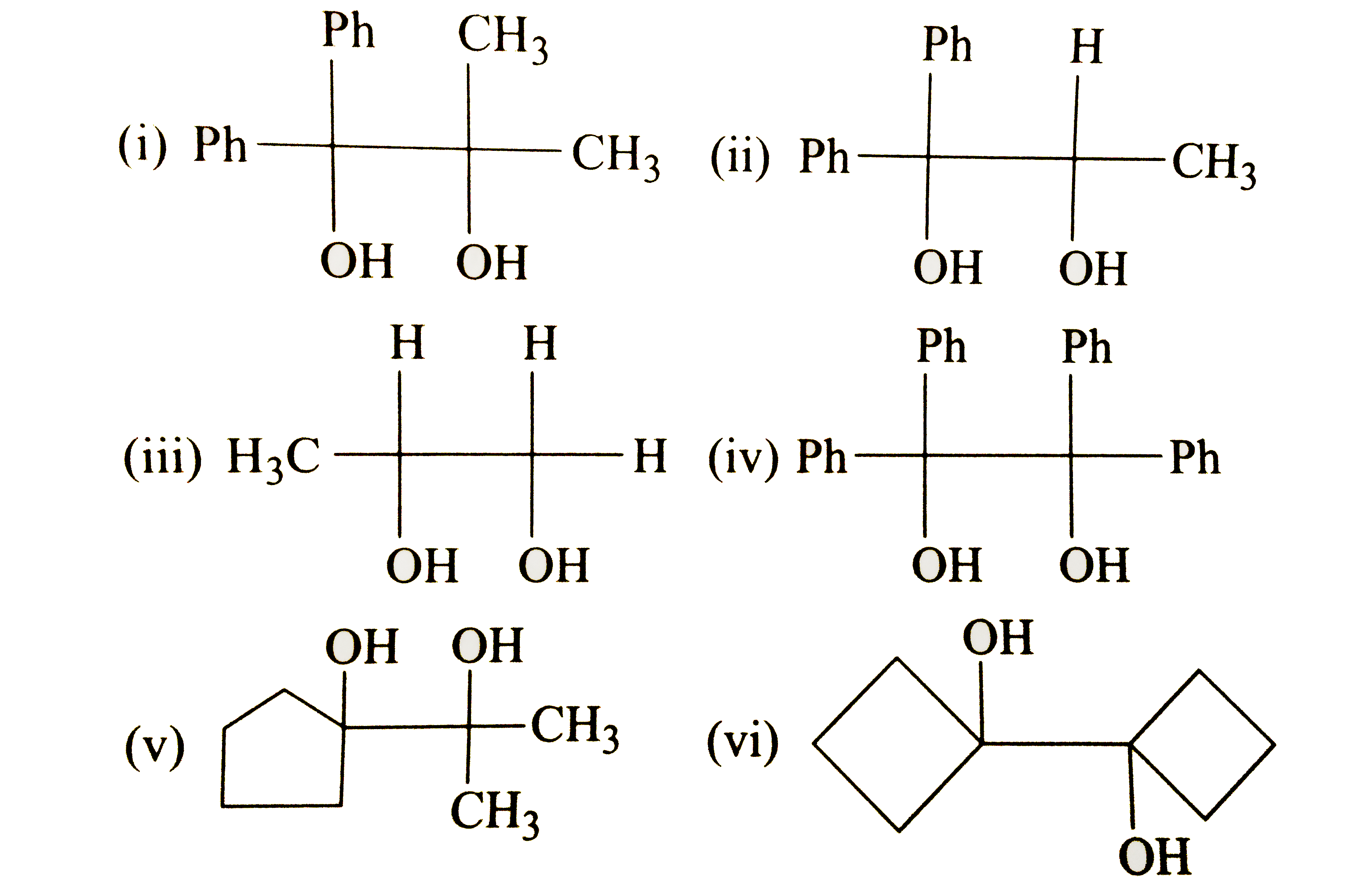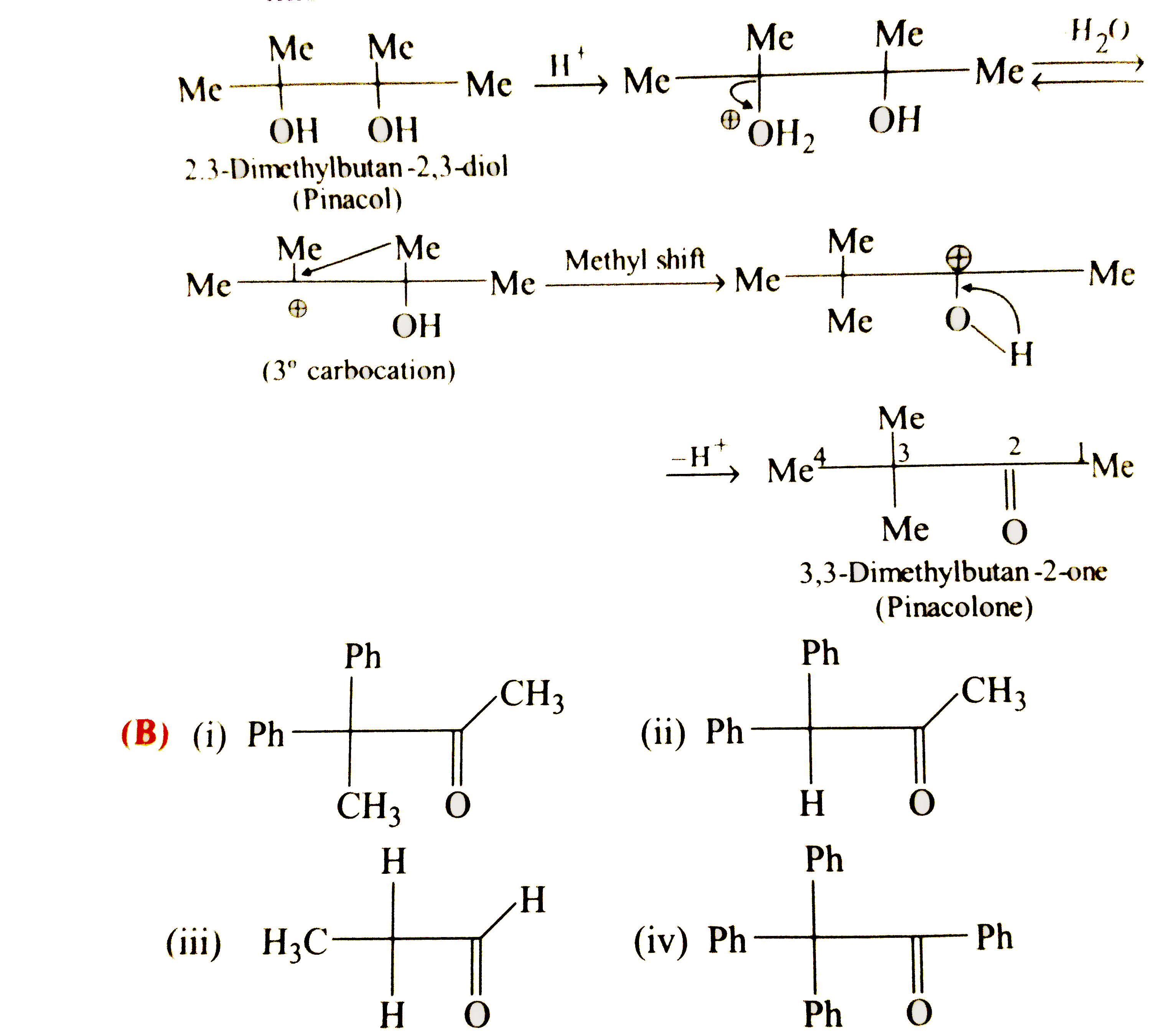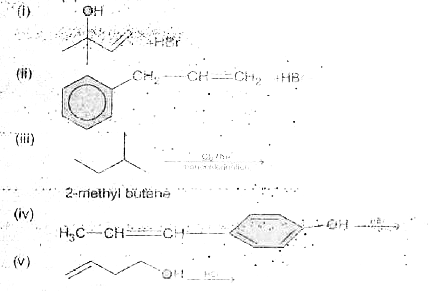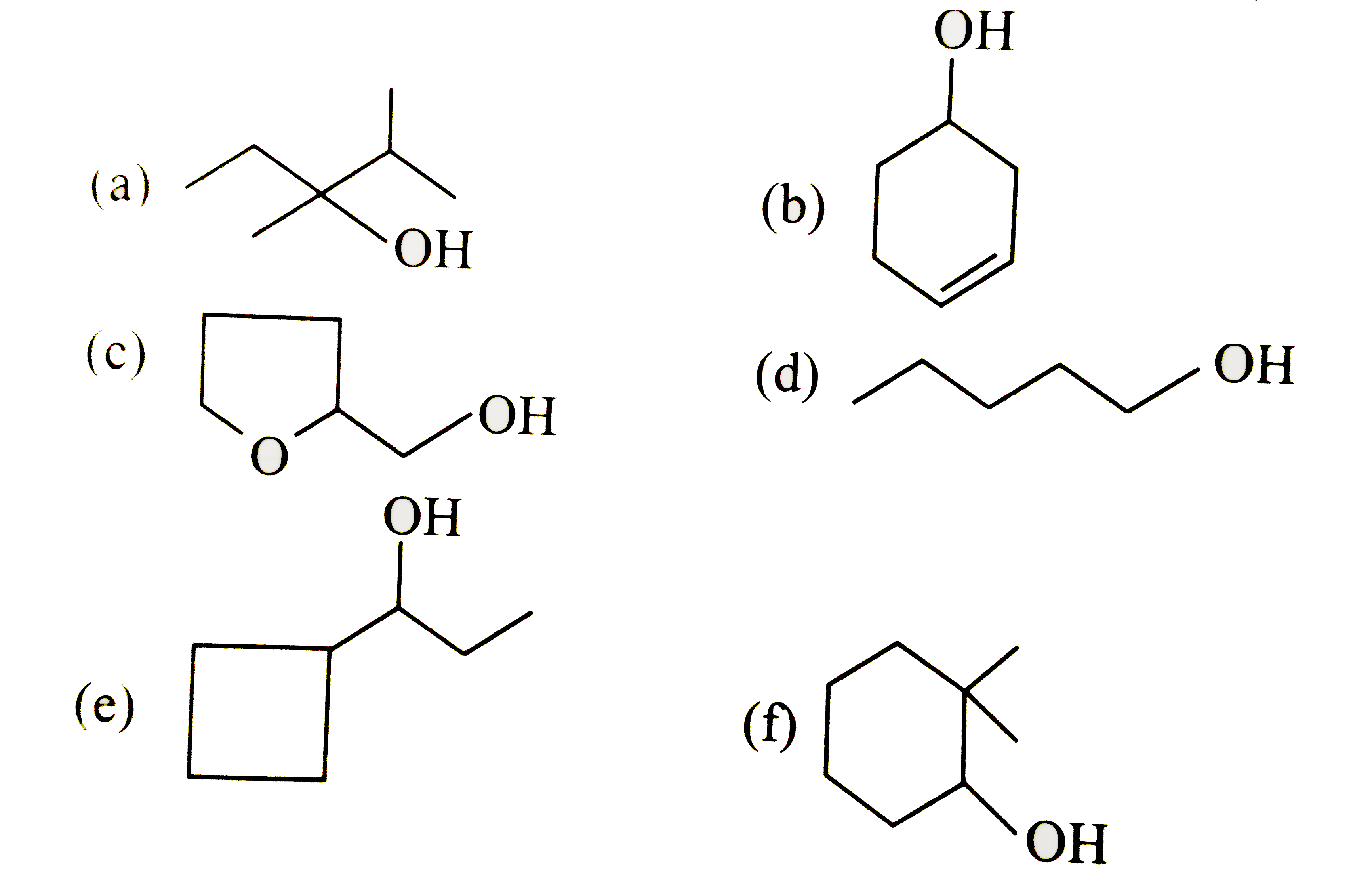(A) Give the mechanism of pinacol-pinacolone rearrangement reaction.
(B) Whatt is the final product when each of the following is treated with H+ or dil. H3PO4.

(A) When pinacols (mostly di tertiary alcohols) are treated with mineral acids (dil. H2SO4 or dil. H3PO4) or acid chlorides , ZnCl2 or other electrophilic reagent, they rearrange to form ketones called pinacolones with the elimination of H2O


Topper's Solved these Questions
- ALCOHOLS, PHENOLS AND ETHERSBook:OP TANDONChapter:ALCOHOLS, PHENOLS AND ETHERSExercise:Matching Type
Explore 2 Videos
- ALCOHOLS, PHENOLS AND ETHERSBook:OP TANDONChapter:ALCOHOLS, PHENOLS AND ETHERSExercise:PHENOLS
Explore 91 Videos
- ALCOHOLS, PHENOLS AND ETHERSBook:OP TANDONChapter:ALCOHOLS, PHENOLS AND ETHERSExercise:Some SOLVED PROBLEMS
Explore 7 Videos
- ALDEHYDES AND KETONES Book:OP TANDONChapter:ALDEHYDES AND KETONES Exercise:SINGLE INTEGER ANSWER TYPE QUESTIONS
Explore 10 Videos
Similar Questions
Knowledge Check
In H3PO4 which of the following is true?
AKa=Ka1×Ka2×Ka3BKa1<Ka2<Ka3CKa1>Ka2<Ka3DKa1=Ka2=Ka3In H3PO4 which of the following is true?
AKa=Ka1×Ka2×Ka3BKa1<Ka2<Ka3CKa1>Ka2>Ka3DKa1=Ka2=Ka3Which of the following reaction does not produce H3PO4?
AReaction between P4O10 and H2OBheating of H3PO3CHeating of H3PO2DReaction between Ca3P2 and H2O
(a) When is the final product(s) in each reaction?

(b) Identify the product(s) in the following reactions :

View SolutionAcetylene when treated with dil. H2SO4 and HgSO4 given
View SolutionDi-tert-glycols rearrange in the presence of acid to give α-trtiary ketones. The trivial name of the simplest glycol of this type is pinacol, and this type of reaction therefore is named pinacol rearrangement (in this specific case, the reaction is called a pinacol-pinacolone rearrangement). The rearrangement involves 4 steps. one of the hydroxyl group is protonated in the first step. A molecule of water is eliminated in the second step and a tertiary carbocation is formed. the carbocation rearranges in the third step into a more stable carboxonium ion via a [1, 2] rearrangement. In the last step, the carboxonium ion is deprotonated and the product ketone is obtained.

What is R.D.S. of pinacol-pinacolone rearrangement ?
View SolutionDi-tert-glycols rearrange in the presence of acid to give α-trtiary ketones. The trivial name of the simplest glycol of this type is pinacol, and this type of reaction therefore is named pinacol rearrangement (in this specific case, the reaction is called a pinacol-pinacolone rearrangement). The rearrangement involves 4 steps. one of the hydroxyl group is protonated in the first step. A molecule of water is eliminated in the second step and a tertiary carbocation is formed. the carbocation rearranges in the third step into a more stable carboxonium ion via a [1, 2] rearrangement. In the last step, the carboxonium ion is deprotonated and the product ketone is obtained.


How many products obtained in above reaction ?
View SolutionDi-tert-glycols rearrange in the presence of acid to give α-trtiary ketones. The trivial name of the simplest glycol of this type is pinacol, and this type of reaction therefore is named pinacol rearrangement (in this specific case, the reaction is called a pinacol-pinacolone rearrangement). The rearrangement involves 4 steps. one of the hydroxyl group is protonated in the first step. A molecule of water is eliminated in the second step and a tertiary carbocation is formed. the carbocation rearranges in the third step into a more stable carboxonium ion via a [1, 2] rearrangement. In the last step, the carboxonium ion is deprotonated and the product ketone is obtained.


Product 'P' is :
View Solution

